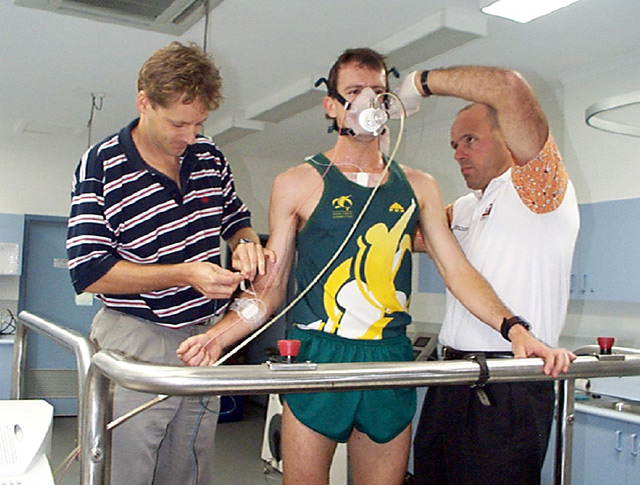Finn, J.P., Marsden, J.F., Wood, R.J., Travar, A.L., Effect of environmental temperature on steady-state and maximal cycling, Proceedings of the International Conference on Physiological and Cognitive Performance in Extreme Environments, Edited by Lau, T., Cotter, J., Forbes-Ewan, C. Defence Science and Technology Organisation, Department of Defence - Australia. Canberra March 2000, pp17-20.
This study found no significant difference in oxygen consumption, heart rate, blood lactate or core temperature of six heat acclimatised athletes during steady-state and maximal cycling when comparing temperate (21.8 ± 0.5 °C; 52 ± 5 % humidity) with warm conditions (29.6 ± 9 % humidity).
Steady-state O2 was measured during six consecutive five-minute bouts of cycling, beginning at 75 W (females) and 100 W (males) and increasing by 25 W each period. Peak O2 while cycling was measured on separate occasions using a continuous incremental protocol to exhaustion (female 75 + 25 W.min-1, males 60 + 30 W.min-1). During the peak O2 test the anaerobic threshold was determined from the pulmonary ventilation curves (VE and VE/CO2. Test results observed in temperate conditions were then compared with the results for the same test in warm conditions.
 sport science research
sport science researchThe heat acclimatised athletes that took part in this study were able to perform adequately during the stress of relatively short duration exercise in 30 °C heat. As a group, there was no significant difference between temperate and warm conditions for heart rate at the anaerobic threshold. However, as individuals, three of the six subjects in this study had differences of 5, 6 and 9 b.min-1 in heart rate at anaerobic threshold between temperate and warm conditions. This suggests that heart rates used as a marker of the anaerobic threshold for training in the heat be derived from tests in the heat.
Related Pages
- Full list of research papers by Rob Wood


 Upcoming Events
Upcoming Events